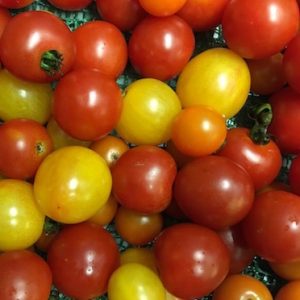
At our food co-op, we’re trying to do something that sounds rational but is actually pretty crazy: keep a small business going just by selling food.
Recently I’ve been trying to figure out a really succinct way to explain why this is so hard. I’m not quite all the way there yet, but it may help to present it as two intersecting feedback loops, one circling around convenience and the other around cheapness.
To understand the convenience side, you have to understand that simply selling food is a truly terrible way to make money. This obviously involves the cheapness side, which I’ll write about separately. But trust me on this: profit margins in the retail food sector are very, very thin. Grocery stores consistently appear on “least profitable” lists (here’s one from 2017, from Forbes), with annual profits somewhere in the 2% range.
At the same time, selling food is a big and relatively secure business. Everyone does have to eat and most of us no longer produce much or any of our own food. So it’s a dependable sector in some ways – if you can figure out how to operate on those very thin margins.
Grocers have developed a lot of strategies for doing that over the past century. You can pay your workers and suppliers less, mechanize your operations more, charge for space on your shelves. It’s easier to do those things if you have a lot of clout in your particular market, which is why grocery chains keep getting larger and gobbling each other up through mergers and takeovers.
But the core strategy, ever since 1930 when Michael J. Cullen had the idea of bringing all aspects of food shopping – canned goods, produce, meat and seafood, baked goods – together under one roof, is to try to create an uber-convenient, one-stop shopping experience.
Offering that whole range of products means you can lower your margin on things you know will get people in the door (bananas, milk, weekly specials) and make it up by selling higher-margin items (meat, prepared foods, pharmaceuticals) and things they didn’t even know they needed, like new flavors of Oreos or pickles. You can sell other things, too (banking, credit cards, delivery, Prime memberships) all of which are easier to make money on than food.
The more goods and services you can stuff under that single giant roof, the fewer reasons people will have to go anywhere else. In the era of Amazon’s move to “disrupt” the grocery sector, that roof is increasingly a digital one. Brick-and-mortar food stores are likely to follow the same pattern as bookstores in the Amazon era, with a handful of chain-based survivors, a scattering of independents that have managed to hang onto a loyal enough clientele, and everybody else scrambling for bits of the giants’ real estate.
Our tiny co-op is trying to be part of that scattering of independents. We’ve tried to counter the lure of uber-convenience with the message “Shop Co-op First” – stop in and see us first and then get the rest of what you need at the supermarket. Some shoppers have taken this to heart and over time we’re seeing more people who are shifting their buying and eating habits to use more of what we sell, rather than coming in expecting us to carry everything they’ve already decided they want.
But we’ll never be one-stop shopping for most of our customers. We’re primarily selling food, not convenience. Silly us! That’s a real disadvantage in the grocery business. Tomorrow our board is having an all-day retreat to refocus our marketing efforts around this, and I’m hoping we’ll emerge with some workable messaging that will help us get a little bit closer to stability in this crazy business we’re in.